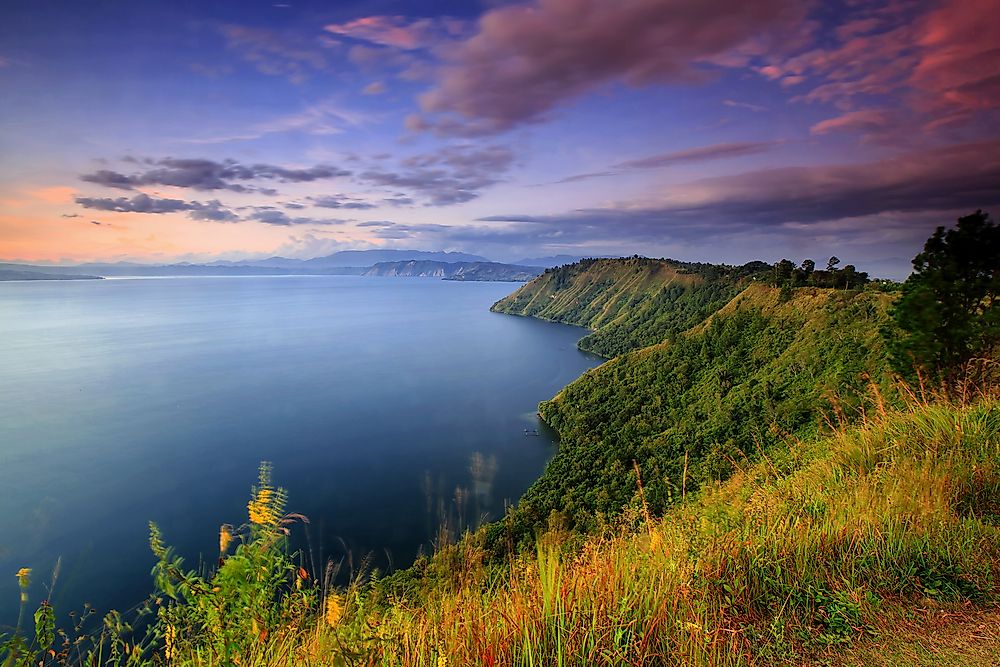What and Where Is the Sunda Arc?

What and Where Is the Sunda Arc?
The Sunda Arc is a volcanic arc in Indonesia that formed the islands of Java and Sumatra, the Lesser Sunda Islands, and the Sunda Strait. The arc is characterized by a series of volcanic mountains. The volcanic arc represents a convergent boundary where the Eurasian tectonic plates underneath Indonesia converge with the Australian and Indian plates. The Bay of Bengal and the Indian Ocean lie on the Australian and Indian plates. The arc is a typical volcanic arc that includes all usual geodynamic features. The Australian and Indian tectonic plates are subducting underneath the Burma Plate and Sunda Plate, and the collision of the tectonic plates led to a tectonic deformation that formed the Java Trench. The Indian Plate is subducting underneath the Burma Plate at a rate of 2.5 inches per year. In December 2004, the stress created by subduction resulted in a megathrust of the Burma Plate, consequently leading to an undersea earthquake in the Indian Ocean that resulted in the infamous 2004 tsunami.
Historic Eruptions
The Sunda Arc has hosted a series of the most violent volcanoes in history. In 1815, Mount Tambora erupted violently in what is considered the largest in recent history and killed 70,000 people. About 75,000 years ago, the Toba supereruption blew up the entire cone of the mountain and resulted in Lake Toba. In 1883, an enormous eruption of Krakatoa completely destroyed an island, and the noise from the eruption was heard 3,100 miles from the island. Mount Sinabung in Northern Sumatra, twenty-five miles away from Lake Toba, has exhibited signs of volcanic activity since 2013. A pile-up of lave pressure beneath the island of Anak Kratakau is raising the island at a rate of 360 inches each year. Mount Merapi has been erupting constantly since the mid-16th century.
Formation of Volcanic Arcs
When subduction occurs, an oceanic trench is formed at the point where the two plates collide, and a series of volcanic mountains is formed above the subducting plate. The volcanoes form offshore islands known as a volcanic island arc. The volcanic arc parallels the oceanic trench. As the oceanic plate slides beneath the continental plate, it becomes saturated with water, which lowers the mantle’s melting point. As pressure increases with depth, water is squeezed out of the plate and introduced into the mantle, and the mantle melts into magma. The magma collects and builds pressure, resulting in volcanic mountains and islands. Volcanic arcs are different from hotspot volcanic chains, in which older volcanoes result in newer volcanoes during subduction. The Hawaiian Islands are an example of a hotspot chain.











